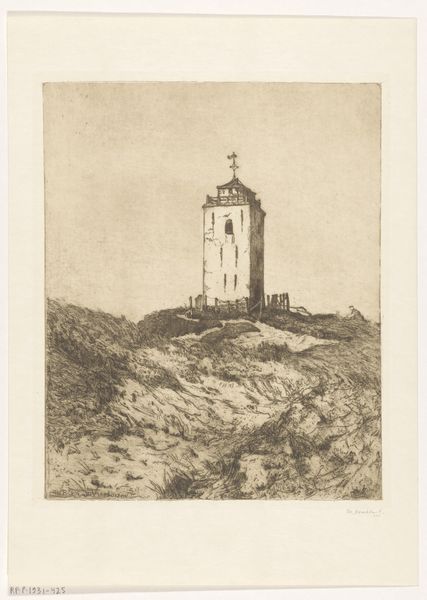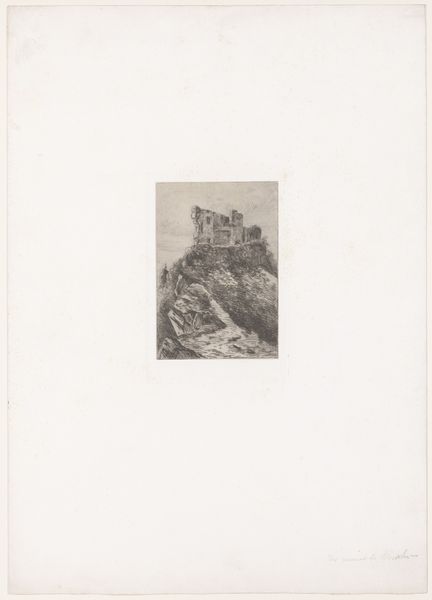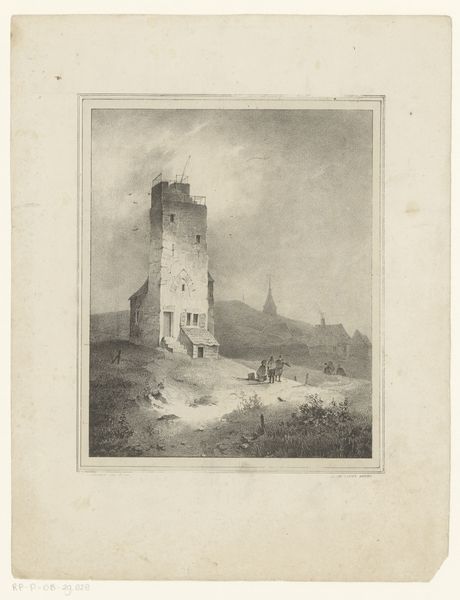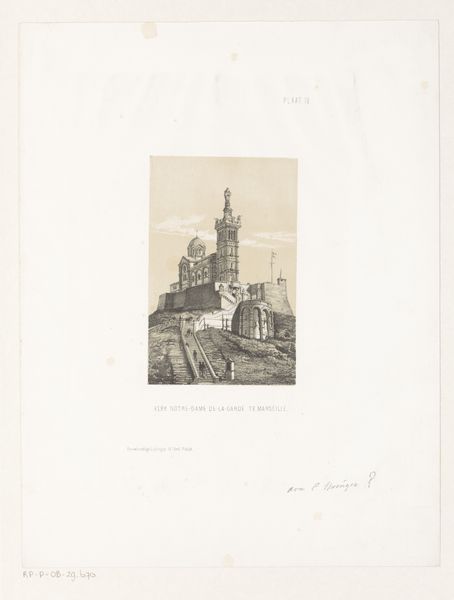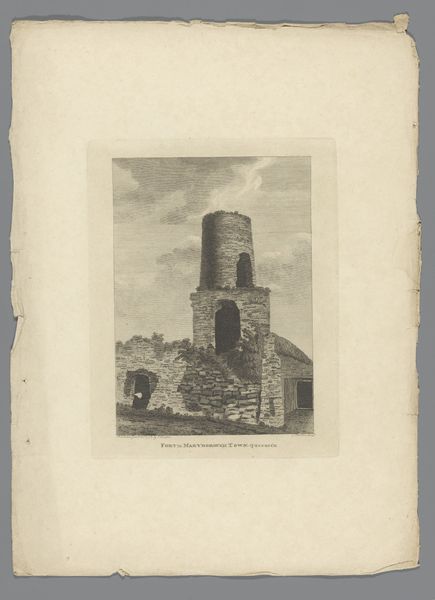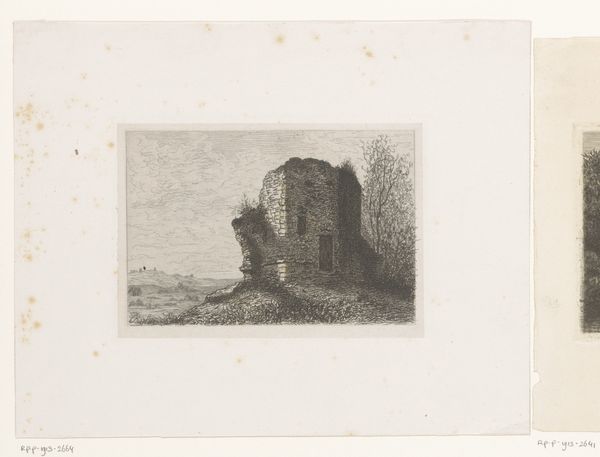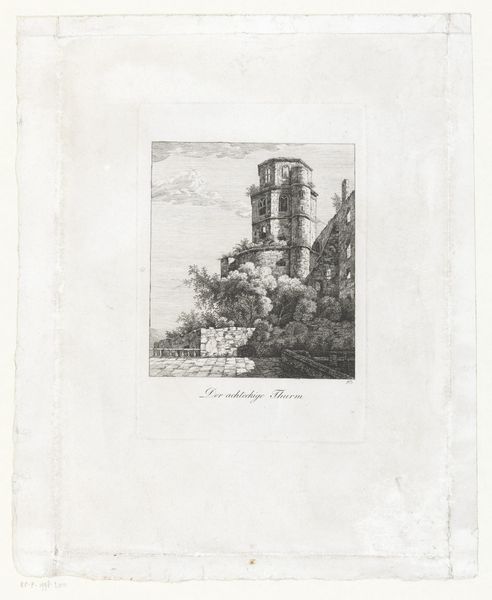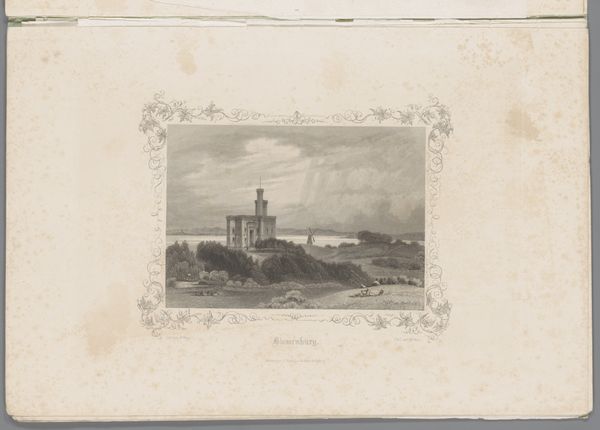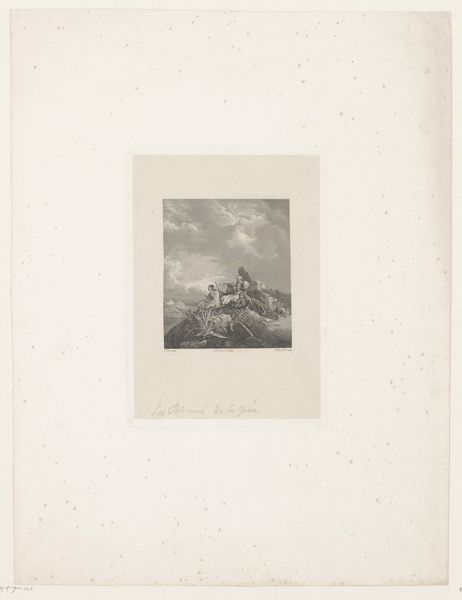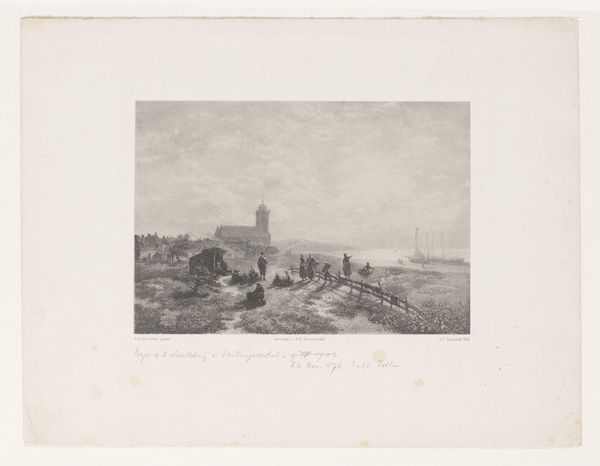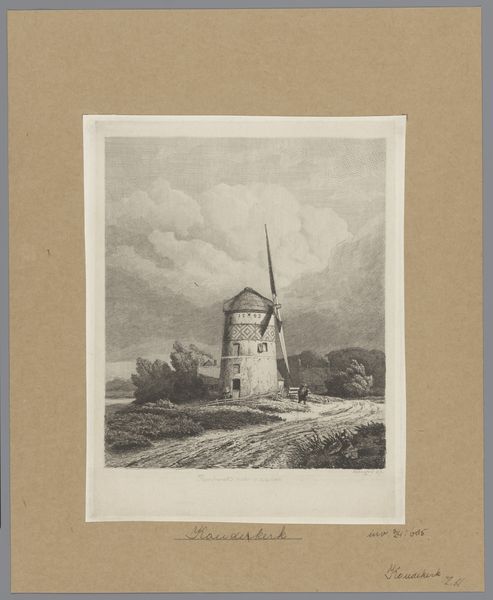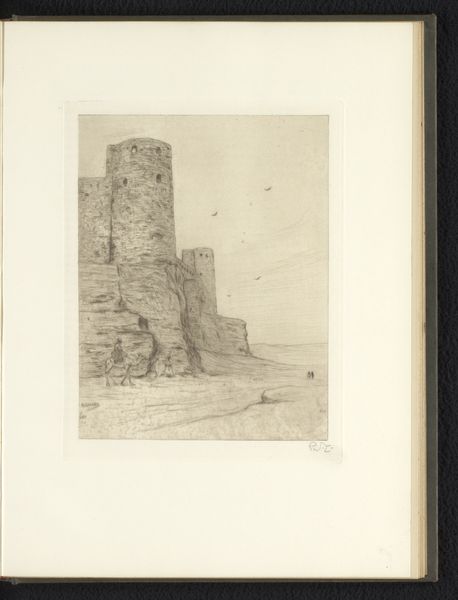
print, etching, engraving
# print
#
etching
#
landscape
#
romanticism
#
cityscape
#
academic-art
#
engraving
Dimensions: height 341 mm, width 264 mm
Copyright: Rijks Museum: Open Domain
Editor: This print, titled "Gezicht op de Télégraphe op Montmartre," attributed to Frederick Nash, from sometime between 1798 and 1856, depicts a scene in Paris using etching and engraving techniques. I am immediately struck by its stillness. What historical narratives do you find embedded within this cityscape? Curator: It’s tempting to view this serene landscape through the lens of Romanticism, given its style. However, consider the context: this telegraph tower represents a revolutionary advancement in communication technology. Its very presence signals a shift in power and knowledge dissemination, impacting Parisian society. Think about how this technological advancement influenced not only the physical landscape but also the social landscape. What impact might it have had on the public imagination? Editor: I hadn't considered the telegraph as an agent of social change in the same way as, say, the printing press. So, its placement on Montmartre, typically a place of leisure and artistry, now serves as this symbolic control point... Curator: Precisely. This juxtaposition highlights a fascinating tension: the evolving urban fabric contending with both the established social hierarchy and budding industrial ambitions. Nash captures that pivotal moment when Paris was beginning to reconcile the old with the new. To that point, who would be accessing information through this technology, and how would they disseminate it further to the wider public? Editor: That gives me a lot to consider - the role of technology in reshaping both physical and social spaces is very compelling. Curator: Indeed. Viewing art through a historical and societal framework broadens our perspective. This isn't merely a scenic cityscape; it's a portrait of evolving power dynamics, made visible.
Comments
No comments
Be the first to comment and join the conversation on the ultimate creative platform.
